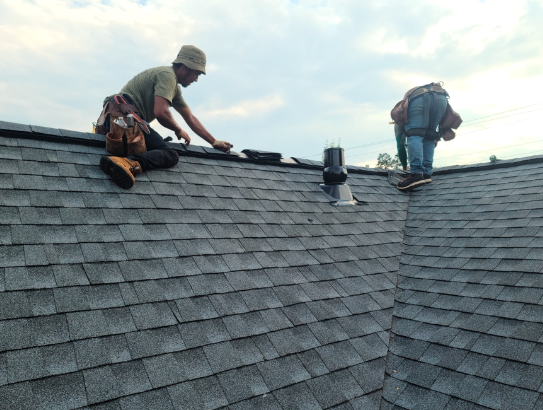
You probably put a lot of thought into your home’s exterior paint color. Even if your color options are limited by an HOA (homeowners’ association), you still have a few choices. You put even more time into deciding the color of your interior walls.
However, when was the last time you considered the color of your roof? If you’re looking for ways to lower your home’s utility costs, your roof can play a role. There are a few key aspects of roof color and design to consider.
Light vs Dark Colored Roofs
You don’t have a ton of color options when it comes to roof shingles. You can usually go with a dark color like black, brown, or even a reddish-brown. Roofing shingles are also available in lighter shades like white, light grey, and beige. No, you’re probably not going to find blue, pink, or even yellow roofs unless you’re willing to pay significantly higher prices for the ultra-special materials.
So, your roofing options are essentially limited to either dark or light-colored shingles. Both types of roofs can look great on a home and give it plenty of curb appeal. However, which is best if your goal is to reduce your energy costs?
Light-colored shingles tend to reflect sunlight, while darker roofs absorb light and heat. However, the roofing material can also impact energy efficiency. Metal and rubber shingles tend to reflect more heat and light than asphalt roofing materials, regardless of color. This is something you probably want to discuss with a roofing professional.
Roofing Colors for Warm and Cold Climates
Do you live in an area that stays warm all year? Maybe your climate tends to stay on the chilly side. Your average annual climate plays a role in determining the best roof color for maximum energy efficiency.
Roofing Colors for Warm Climates
If your annual temperatures tend to stay well above the freezing mark, you probably want to go with what’s known as a cool roof. No, this doesn’t mean you’ve made it to the popular group. The term simply refers to the roof’s color.
Cool roofs are reflective, which usually means light in color. This type of roof reflects sunlight, so less heat is absorbed into your room. This means your house stays cooler without having to crank up the air conditioning. Since your AC makes up a significant portion of your summer energy bills, reducing usage typically results in noticeable savings.
Roofing Colors for Cooler Climates
If freezing temperatures are common in your area, and you’re not running your AC every second in the summer, you may want to go with a darker-colored roof. Dark roofs absorb more sunlight, which can cut down on your heating costs.
Since dark-colored roofs absorb heat, snow tends to melt a little faster. If you’re concerned about snow weight potentially damaging the roof, this can help resolve the problem. Did you know that choosing the right roofing color can save up to 15% on your home’s energy costs, according to the U.S. Department of Energy?
Tips on Maximizing Your Roof’s Energy Efficiency
If you’re ready to improve your home’s energy efficiency with a new roof, here are a few things to consider. Always consider your local climate. The average annual temperature plays a large role in determining the best roof color for your home. Remember, light colors are best for warmer climates. If your temperatures are cooler, a darker colored roof is probably the best option.
The roofing materials also factor into energy efficiency. Sometimes, the materials are more important than the color of the shingles. Some materials are naturally reflective regardless of their color. An example is metal. Both dark and light colored metal roofs will reflect sunlight and heat. However, if you want to retain heat to cut back on winter energy costs, an asphalt roof is probably the way to go.
You also want to consider the roof’s design, and this usually depends on the building. Some homes have flat roofs, while others may be sloped or angled. The design can play a role in everything from the right color to the type of shingle materials. Don’t forget about insulation. Without adequate insulation, the roofing color and material type aren’t going to impact energy efficiency. A good tip is to talk to a roofing professional about insulation and the roof’s design.
Your Roof Can Help Lower Energy Costs
Your roof can do more than keep the weather outside. The right roof can reduce your home’s energy costs, and this is always a good thing. If you’re ready to replace your roof, consider installing one designed specifically for your climate.
